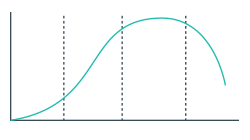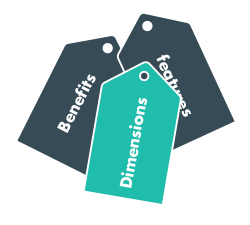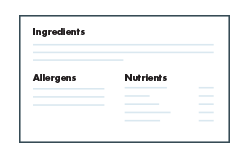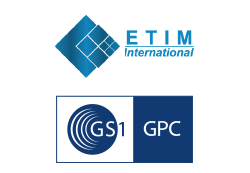
Product Master Data
Product Master Data comprises the core data that is essential to operations in your entire value chain. SyncForce can either master these fields or they can be pulled from an existing MDM system. Common Product Master Data fields include: Product ID, GTIN, Finished Good Code, Product Name, Product Class and Brand. Brand Master Data consists of Brand Name, Brand synonyms and GBIN (Global Brand Identification Number).

Life cycle management
In SyncForce not one but three life cycle types are supported:
- Product Life cycle, which defines for each individual product whether the product in development, active or discontinued.
- Trade Life cycle, which defines for each channel or market whether a product is sold. For each product, multiple trade life cycles can be set, which allows you to launch products in different channels/markets at different moments in time.
- Digital Life cycle, which defines in which channels/systems the product is digitally listed. This allows you for example to announce products before they are available or orderable.

Product Features
You can configure an unlimited number of product features in SyncForce. Features are linked to product classes to make sure users only get relevant fields when adding new products. All features have extensive configuration options like data type (text, single select, multi-select, date, integer, number + unit, et cetera), view & edit rights and mandatory settings.
Blog: Computer says “all fields are filled” does not equal good data quality

Digital Assets
An unlimited number of digital assets can be linked to a product in a specific role. Digital Asset types can be freely configured (video, image, animation, logo, icon, document, 3D CAD, 2D Artwork, Dieline). There are no limitations in file types that can be handled. Product Digital Assets also includes the option to define custom fields for digital assets to store additional information. Every digital asset has multiple file types to support different usage (e.g. high res TIF for print and PNG for web, GS1 compliant images).

Food Label Information
Food Label Information is a preconfigured module that allows you to manage portioning, ingredients declaration, ingredients list, nutrients and allergens to ensure the quality of the product data required by the regulation (EU 1169/2011, 2002/46 and 2009/54).
Blog: EU 1169/2011, How product labels lost their reputation as a single source for nutrition facts

Industry / Secondary Classifications
Data pools and customer portals usually have their own classifications to categorise products. At the same time, many data channels use industry standards like GPC or ETIM. SyncForce makes it easier for your product managers to “select” the right class per channel, by mapping your internal classification upfront to the standard third-party classifications that are available in our system. This reduces the need to select the right class per channel for every single product.

Localized Specifications
Some product specifications or attributes can differ, depending on where the product is manufactured, stored or sold. SyncForce allows you to set up an unlimited number of location types to support this. The most commons types are production facility, warehouse and sales office/OpCo. For each location type multiple fields can be configured, like the minimum order quantity per sales office / operating company or the storage temperature range (min/max) per market.

Product Relations
Products can be modular, can have accessories, alternative products or competitive products. SyncForce supports the configuration of an unlimited number of relation types.

Markets & Channels
While retailers are facing an omni-channel challenge, most manufacturers are a facing a multi-channel challenge. Market and channel differentiation can be managed in SyncForce by defining for each finished good and shipping unit in which markets and channels the product will be active.

Translation & Localisation
Selling products in multiple markets requires content localisation. SyncForce has optimised multiple capabilities that optimise localisation and translation. Translations are only required for languages that are needed for the markets in which the product will be sold. SyncForce has standard APIs for requesting and processing translations in case you work with one or multiple external translation service providers. All languages are supported.

Shipping Hierarchy
SyncForce allows you to define multiple shipping hierarchies per product, in a very easy and visual way. Shipping hierarchies can consist of one or more levels with standard shipping unit types (e.g. product, outer carton, pallet, display). Users can define location specs per shipping unit type, which allows them to store additional information. This also includes the option to define the trade settings on every shipping unit (orderable, shippable, is consumer unit, price on pack).

Packaging Materials
Most companies want to grow the business whilst reducing the overall environmental impact across the entire value chain. In SyncForce you can manage and track packaging materials (including weight en volume) for enclosing or protecting products for distribution, storage, sale, and use.

Pricing
Prices can come in many shapes and forms, like MSRP, list prices or pricing that depends on the channel (direct to consumer, inter-company, wholesale, et cetera). In SyncForce multiple price types and price regions can be defined. Not only current, but also past and future prices can be managed in SyncForce.

Audit Trail
The SyncFoce Audit trail provides a step-by-step record that provides evidence of the sequence of changes that have affected your product information. This means that at any time, data can be traced to their source.
Interested in exploring how SyncForce Circular PIM can help accelerate your business’s organic growth cost-effectively? Please fill out the form below, and we’ll soon get in touch with insights and solutions customized to meet your business needs.